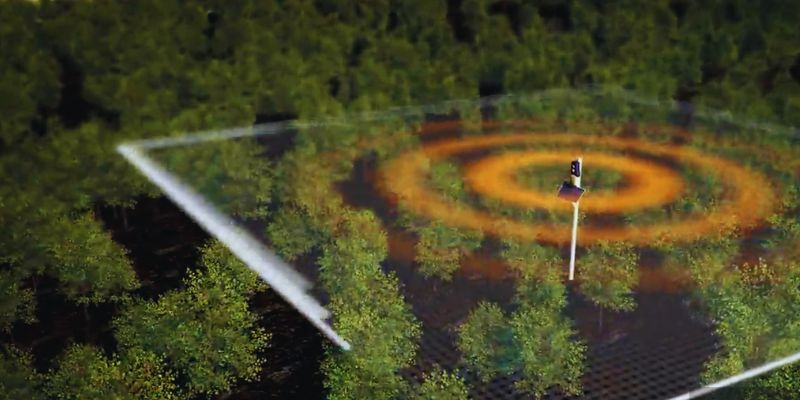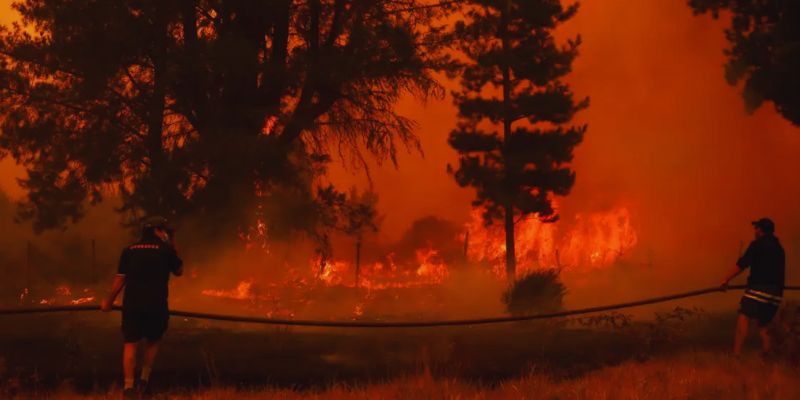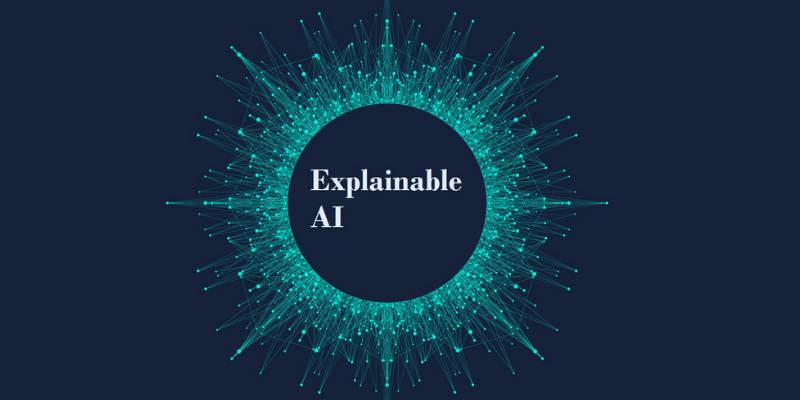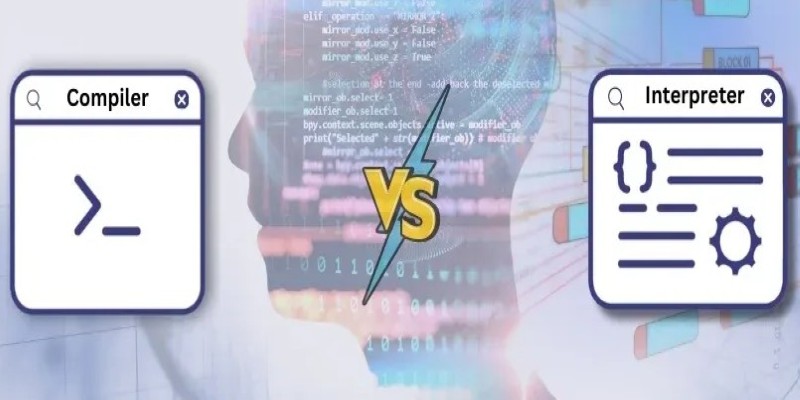Advertisement
Forest fires have long been a threat to Chile's forests, wildlife, and nearby towns. Rising temperatures and prolonged droughts have increased the likelihood of wildfires. Chile has embraced new technologies meant to lower damage and enhance early identification. Artificial intelligence (AI) and forest fire sensors now detect fires faster than traditional methods. These instruments let authorities react fast to stop the spread of flames.
Smart sensors and artificial intelligence models are revolutionizing the monitoring of fire hazards. They work even at far-off locations, 24/7. Chile is leading South America in adopting high-tech fire safety technologies. The game has been changed by the application of smart wildfire prevention tools, AI-powered fire warning systems, and Forest fire detecting technology. With these technologies, Chile intends to defend its people and forests more successfully than before.

Chile has placed modern sensors in forests that are at great risk of fire. These sensors gather environmental data straight away. They track degrees of temperature, humidity, wind speed, and air quality. Any variation that suggests a possible fire sets off an alert. The alarms are relayed straight to central monitoring systems. Local authorities and firefighters are then advised. Early discovery helps to stop the spread of fires. Patrols and traditional watchtowers can overlook flames or report them too late.
Sensors operate continuously without the need for rest or sleep. They labor both day and night. These sensors can even detect smoke or heat from a small spark. These are weather-resistant and run on solar energy. They keep on during storms or heat waves. Sensor alarms, with their accuracy and quickness, allow teams more time to act. The fire services of Chile now enter dangerous areas quickly. These tools have helped preserve thousands of acres.
AI speeds Chile's analysis of fire hazards. It analyzes enormous volumes of data coming from satellites and sensors. AI can spot trends suggesting a fire risk. It forecasts likely locations of fire starting. Authorities use this information to allocate resources at strategic points and schedule patrols. AI also aids during active fires. It determines fire movement speed. It indicates the expected direction of wind and flame travel.
Teams on the ground posture safely using this. Today, rescue and evacuation efforts are more exact. AI also uses drones. Drones send real-time images to AI systems for analysis. AI then shows the regions with the most risk and maps the fire. Firefighters move with efficiency using these maps. The National Forestry Corporation of Chile saves trees and lives by means of artificial intelligence. The outputs have been outstanding and keep getting better.
Chile's forests cover difficult and isolated terrain. Many places vulnerable to fire are difficult to reach, and conventional techniques were unable to monitor these areas adequately. That has changed with the introduction of smart sensor networks. Wireless communication systems bind these networks. They broadcast data even from far hills or valleys. Every sensor passes information forward to the next. Together, they create a connected grid.
Currently, every inch of the forest is under observation. A single spark in any area can trigger a series of alerts and responses. Alerts sweep the system quickly. Notifications to authorities come right away. Low-power wide-area networks help to make this feasible. These systems run for months without requiring fresh batteries. Hundreds of these sensors have been put in place by Chile's fire safety initiative. They fit within a more general smart forest plan. This strategy greatly depends on the application of smart wildfire prevention tools.
Additionally, Chile's AI systems work during fire off-seasons. Previous year data is kept and examined. More precisely than previous techniques, artificial intelligence forecasts future fire seasons. It draws on prior fire incidents, rainfall statistics, and climatic patterns. These projections help scientists guide efforts in fire prevention. They also enable the preparation of public warnings. Near forests, towns get alerts early on. People have time to create evacuation plans or remove dry vegetation.
Additionally, forest management rules and legislative amendments are supported by artificial intelligence. Artificial intelligence helps officials decide where to invest in safety precautions. Reforestation schemes now take fire risk areas into account. The system continues to learn and improve each year. More data helps the AI system become smarter and more precise. Smart forecasting and real-time data guide Chile's fire policies nowadays. Thanks to AI-powered fire warning systems, this proactive strategy is feasible.

Chile's battle against wildfires transcends technology. Globally coordinated efforts and community awareness also count greatly. Residents are given lessons on artificial intelligence and sensors. They learn how to react to notifications. Farmers and residents help keep sensor sites operational. Schools undertake fire safety drills. These behaviors help facilitate quick reactions upon fire initiation. Chile also collaborates with other governments and multinational technology corporations.
Funding AI initiatives comes from international support. Europe's and North America's experts exchange tools and software. Satellite data is shared in real-time from space agencies. Chile's fire departments also train with international crews. This sort of skill-sharing increases preparedness. Chile gives back by sharing its lessons with other nations. Chile has become a model for fire prevention across Latin America. Working together, countries and people help to make forests safer. Essential are both technology and teamwork.
Chile now leads the world in modern fire prevention using contemporary ideas. AI and sensors have transformed forest fire management. Fires are discovered early on. Response times have gotten faster. Remote locations are now under constant observation. Forecasts are more exact. People feel better educated and safer. Nature is being preserved in part by the application of forest fire detection technology, smart wildfire prevention tools, and AI-powered fire warning systems. Chile's model shows how teamwork, design, and technology save forests as well as lives. Other nations turn to Chile for direction these days. These smart-systems could shape the future of fire safety.
Advertisement

Discover how AI in the NOC is transforming network operations with smarter monitoring, automation, and stronger security

Learn how rising AI use affects data centers, energy, water, and the environment—and what solutions can reduce its impact today

Know explainable AI techniques like LIME, SHAP, PDPs, and attention mechanisms to enhance transparency in machine learning models

AWS unveils foundation model tools for Bedrock, accelerating AI development with generative AI content creation and scalability

Restructure DevOps for ML models and DevOps machine learning integration practices to optimize MLOps workflows end-to-end

Curious about what really happens when you run a program? Find out how compilers and interpreters work behind the scenes and why it matters for developers

AI transforms sales with dynamic pricing, targeted marketing, personalization, inventory management, and customer support

Understand how global AI adoption and regulation are shaping its future, balancing innovation with ethical considerations

Compare GPUs, TPUs, and NPUs to find the best processors for ML, AI hardware for deep learning, and real-time AI inference chips

Ever needed fast analytics without heavy setups? DuckDB makes it easy to query files like CSVs and Parquet directly, right from your laptop or app.

IoT and machine learning integration drive predictive analytics, real-time data insights, optimized operations, and cost savings

Learn how Automated Machine Learning is transforming the insurance industry with improved efficiency, accuracy, and cost savings